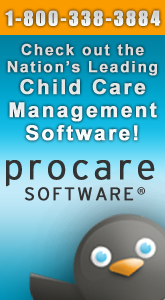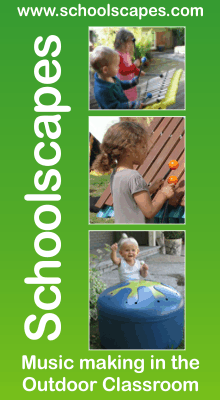ExchangeEveryDay Past Issues
 << Previous Issue
| View Past Issues | | Next Issue >>
<< Previous Issue
| View Past Issues | | Next Issue >> Helping Children Read and Write
June 11, 2012
Life is change. Growth is optional. Choose wisely.
-Karen Kaiser Clark
-Karen Kaiser Clark
This is the advice from Joan Lombardi in her Exchange article, "Promoting Language, Literacy, and a Love of Learning Makes a Difference," which is one of the course readings for the Exchange CEU, "Literacy in the Early Years." She continues...
"During the infant and toddler years, children need relationships with caring adults who engage in many one-on-one, face-to-face interactions with them to support their oral language development and lay the foundation for later literacy. During the preschool years, young children need a wide range of developmentally appropriate experiences to support literacy, including — but not limited to — positive, nurturing relationships with adults who engage in responsive conversations with individual children. Child care providers need to model reading and writing behavior and foster children's interest in and enjoyment of reading and writing through exposure to a print-rich environment and daily adult reading of high-quality books.
"The same good practices should continue throughout the early school years. For school-age child care programs, children need quality programs with a consistent adult to talk to and to listen. They need environments that can stimulate their curiosity and promote physical activity, as well as provide ample opportunities to enjoy reading and writing, to express their creativity and to receive individual assistance with homework and skill building activities that go on during the regular school day."
 Now you can meet your continuing education requirements from your home computer in your spare time! The process is simple, takes place entirely online, and best of all, is extremely affordable. Exchange is proud to offer you this unique opportunity in partnership with University of Wisconsin-Stout. In addition to getting credit for reading each issue of Exchange, you can order sets on Exchange articles on the following topics to read for credit:
Now you can meet your continuing education requirements from your home computer in your spare time! The process is simple, takes place entirely online, and best of all, is extremely affordable. Exchange is proud to offer you this unique opportunity in partnership with University of Wisconsin-Stout. In addition to getting credit for reading each issue of Exchange, you can order sets on Exchange articles on the following topics to read for credit:
For Teachers
- Outdoor Play Environments
- Food and Nutrition Challenges
- Literacy in the Early Years
- Serving Children with Special Needs
- Managing Challenging Behaviors
- Math in the Early Years
- Brain Research Implications for Early Childhood
- Involving Parents in Your Program
- Observation and Assessment
- Reggio Emilia Learning Experiences
- Making Play Work
- Social and Emotional Development
- Staff Recruitment and Selection
- Staff Challenges
- Leadership in Early Childhood
- Supervising Early Childhood Staff
- Training Early Childhood Staff
- Evaluating Early Childhood Programs
- ECE Leadership Issues #1
- Marketing Child Care Services
- Managing Money
- Maintaining a Safe Environment
- Physical Environment and Room Arrangement
- Organization Management
- Observation
- Teamwork
- Communication
Sale ends 06/15/2012




Comments (1)
Displaying 1 CommentSafari Learning Academy
Sonora, CA, United States
Yes, there IS a simple way to help children learn to read and write. First the MUST learn the sounds and shapes of the alphabet. However, the letters are symbols. How can symbols make sound? And how do we help our preschoolers connect the sounds of the letters to the shapes of the letters? Simple: We use animals to sit on the letter and follow its shape. The alligator is drawn in the shape of the lowercase (used 95% of the time in text) letter "a," the bear is in the shape of the lowercase "b," etc. ("A picture is worth a 1,000 words!). next we use our bodies to "wiggle" the letter - for example: the alligator open and closes his mouth, so we use our hands to imitate him, "open and close." The bear loves honey, so we reach way up to the honey hive with our arm and bring the honey down to his mouth. Each letter has a fun body movement. this body movement acts like the CEMENT that glues the sound to the letter. We can ask the child, "what animal is this?" they will say, "alligator" and we repeat back, as we do the body movement, "aaaaaaaaaaaaaaalligator." They FEEL (eyes, ears, mouth and body) and LIVE the letter. So much more effective than looking at an abstract symbol and trying to remember the letter's sound. We teach lowercase letters first and their sounds because, as stated earlier, lowercase letters are used 95% of the time.
Because children look at adorable animals and wiggle their bodies in response, we can start with our 18 month children. By the time they are 2 they know the sounds and shapes of the entire lowercase alphabet and can address sounds to initial sounds in words. By three they can spell and read simple VC and CVC words. By the time they are heading to Kindergarten, they are reading and spelling sentences. It has been wonderful for our children who come here with limited English, for our special needs children and for youngest of children who are just developing language.
Post a Comment